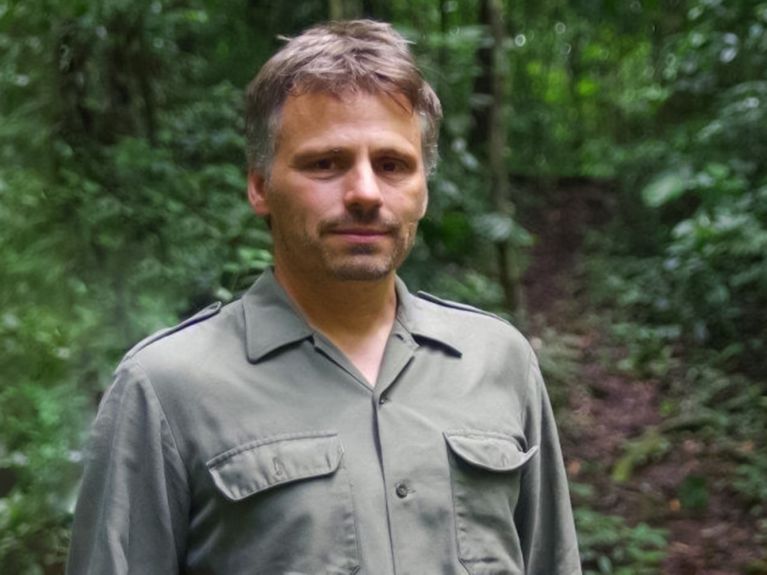Tracking down the killer virus
The Robert Koch Institut’s Fabian Leendertz is researching pathogens from the animal kingdom in Africa. He tells us where the greatest danger lurks.

Dr. Leendertz, your “Epidemiology of Highly Pathogenic Microorganisms” Project Group has been researching the origins of dangerous viruses in tropical Africa since 2007. What exactly do you do there? And why in Africa?
Our Project Group combines different theoretical approaches in order to research the origins and possible reservoirs, transmission mechanisms and evolutionary pathways of zoonotic microorganisms, meaning pathogens from the animal kingdom. We concentrate in particular on sub-Saharan Africa since, compared to other regions in the world, it bears a disproportionately high burden of morbidity and mortality due to infectious diseases and is also a hotspot for zoonotic disease emergence.

Are the pathogens that arise there of regional or more of global importance?
Although, as a rule, the pathogens have managed to cross over to humans in remote corners of the earth where there is poor infrastructure, the spread of HIV, SARS-Coronavirus, Ebolavirus and H5N1 shows that zoonotic microorganisms are no longer just of local significance but can represent a global threat. For this reason, researching the mechanisms of how such diseases spread in high-risk areas is of direct relevance for the global healthcare system.
The most frequent cause of transmission is when humans penetrate into hitherto virgin terrain where there is great biodiversity.
One focus is on apes living in the wild …
Yes, because pathogens that do not originate in human primates can, owing to their genetic proximity to humans, often cross the species barrier to us more easily. Our research also covers possible animal hosts and intermediate hosts, especially those whose habitats are in or close to human settlements, such as livestock or household animals, bats and rodents. At the same time, we gather data on environmental and epidemiological factors in the respective regions.
Today, three out of five infectious diseases originate in animals. What is the most frequent cause of them crossing over to humans?
Humans and animals live in close contact with one another and this is especially relevant where people penetrate into hitherto virgin terrain characterized by great biodiversity – and therefore also a great diversity in micro-organisms.
Africa is considered a continent under particular threat owing to the fact that it has only a rudimentary healthcare system. What solutions do you propose for the countries there?
We are of the opinion that locally adapted intervention strategies based on surveillance data that combine clinical and lab data from locations that differ in terms of the environment and demographics improve human health more effectively than vertical health programmes. Key here is strong collaboration with our partners in African institutions.
